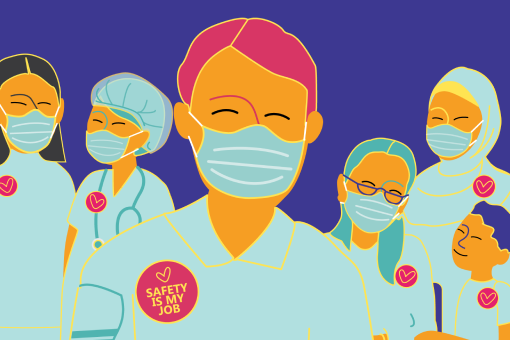Safety is much more than the absence of harm
Strengthening patient safety is fundamental to excellent healthcare and has been a recognized priority in Canada for more than 20 years. Historically, patient safety efforts have focused mostly on measuring and responding to physical harm. However, safety is much more than the absence of harm. And as recent data show, we still have a way to go before we get there.
Globally, 10 percent of patients are harmed and over 3 million people die every year from healthcare, according to the World Health Organization. Closer to home, The Canadian Adverse Events study of 2004 found an overall rate of patient harm of 7.5% in hospital settings, with 37% of adverse events deemed preventable. More recent data reported by the Canadian Institute for Health Information found one in 17 hospital stays in Canada involved at least one harmful event in 2022-23. The data highlight the urgency of improving patient safety as rates in recent years have been higher compared to pre-pandemic numbers. The majority of the data available focuses on physical harm rather than all forms which also includes psychological, social and spiritual harm.
Healthcare Excellence Canada plays an important role in shaping the way patient safety is defined and understood. Initially through the work of the Canadian Patient Safety Institute (CPSI) and now as HEC, we are supporting a transformative shift from seeing safety as the absence of harm to a more holistic approach to fostering safe, inclusive care. One of the primary ways we are doing this is by working to apply the leading framework for measuring and monitoring safety, to see what lessons can be learned about its application in Canada.
A framework for expanding the definition of safety
The release of the Measurement and Monitoring Safety Framework (MMSF) catalyzed a major change in the way safety is defined and practised and has informed and influenced Healthcare Excellence Canada’s approach. Created by Professor Charles Vincent and colleagues at The Health Foundation in 2013, the MMSF proposed shifting away from focusing on the absence of harm towards adopting a broader view of safety. This new view examined the sources of resilience and capabilities that enable safe care and endorsed a less reactive approach to improving safety.
Learn about the MMSF and how it has been applied in Canada.
Shifting from rethinking towards acting on patient safety
How we act to create safer care is just as important as how we conceptualize it. That’s why Healthcare Excellence Canada has developed the following resources to help you rethink and act to improve patient safety in healthcare settings.
Rethinking Patient Safety Discussion Guide
Healthcare Excellence Canada published Rethinking Patient Safety, a Discussion Guide for Patients, Healthcare Providers and Leaders during Canadian Patient Safety Week 2023 to encourage everyone across the continuum of care to enable safer care. The guide explains Healthcare Excellence Canada’s approach to patient safety that fosters a curious mindset and shifts away from seeing safety as simply the absence of harm. This resource also aims to spur discussions around patient safety and what is means for you.
How Safe is Your Care?
The release of How Safe is Your Care? Measurement and monitoring of safety through the eyes of patients and their care partners provides important insights into how patients and their care partners see safety. The report offers guidance on how to effectively engage patients and care partners in all aspects of measurement and monitoring of safety and provides recommendations outlining how to strengthen provider and patient partnerships in support of safer care.
Related resources
{{currentEntry.friendlyTitle.length > 0 ? currentEntry.friendlyTitle : currentEntry.title}}
- {{param_allText}}
- {{decodeURI(filterType.title).replaceAll('+', ' ').replaceAll('%26', '&')}}
- {{param_allText}}
- {{decodeURI(filterType.title).replaceAll('+', ' ').replaceAll('%26', '&')}}
- {{param_allText}}
- {{decodeURI(filterType.title).replaceAll('+', ' ').replaceAll('%26', '&')}}
